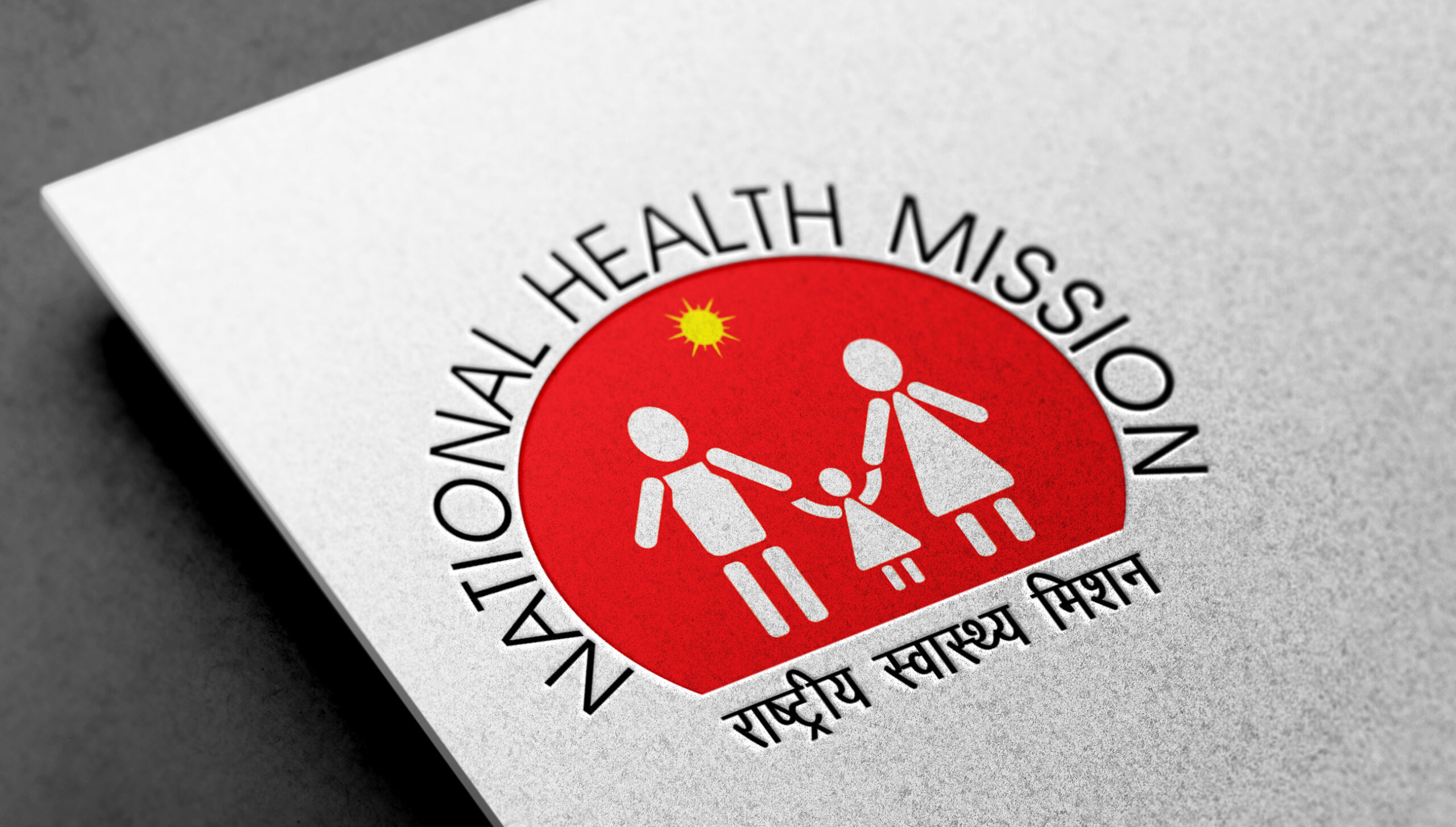The National Health Mission (NHM) has been a cornerstone of India's public health progress over the past several years. Initially launched as the National Rural Health Mission (NRHM) in 2005 to build accessible, affordable, and quality healthcare systems for rural populations, particularly vulnerable groups, the mission expanded in 2012 to include the National Urban Health Mission (NUHM). This led to the rebranding of NRHM to NHM, which now consists of two sub-missions: NRHM and NUHM.
NHM's comprehensive approach has made significant strides in reducing maternal mortality, controlling communicable diseases, and improving healthcare infrastructure, especially at the grassroots level. The Indian government’s assessment report, presented to the Union Cabinet on January 22, 2025, outlines key achievements and highlights the NHM’s contribution to improving the country's overall health outcomes.
About National Health Mission
The National Health Mission (NHM) operates under the Ministry of Health and Family Welfare (MoHFW), providing both financial and technical support to state and union territory governments. Its primary focus is on building infrastructure, strengthening human resources, and improving service delivery to ensure accessible, affordable, and equitable healthcare, particularly in remote and underserved areas.
Key Components of NHM
The NHM is structured around several key components, each targeting specific health challenges and areas of need:
- Reproductive, Maternal, Newborn, Child, and Adolescent Health (RMNCH+A): This component focuses on improving maternal and child health, reducing child mortality, and enhancing nutritional outcomes. The NHM has made significant strides in reducing the maternal mortality ratio (MMR) and infant mortality rate (IMR), bringing India closer to meeting its Sustainable Development Goal (SDG) targets for maternal and child health.
2. Health Systems Strengthening: The NHM emphasizes improving healthcare facilities, human resources for health, and governance structures to ensure the effective delivery of healthcare services. This includes the establishment of new health infrastructure and the improvement of existing health centers and hospitals.
3. Non-Communicable Disease Control Programmes: These programs target diseases that cannot be transmitted, such as cancer, diabetes, and cardiovascular diseases. Through increased awareness and early diagnosis, these programs aim to reduce the burden of non-communicable diseases in India.
4. Communicable Disease Control Programmes: The NHM focuses on controlling infectious diseases like tuberculosis (TB), malaria, dengue, kala-azar, and leprosy. By strengthening surveillance and treatment programs, the mission has contributed significantly to reducing the incidence of these diseases.
5. Infrastructure Maintenance: The NHM has been instrumental in the maintenance and upgrading of healthcare infrastructure, including health posts, district hospitals, and training centers. This component also supports the salaries of healthcare workers involved in family welfare schemes.
Achievements of NHM (2021-2024)
The NHM has made significant progress in several areas, particularly in reducing maternal and child mortality rates, controlling infectious diseases, and strengthening healthcare infrastructure.
Expansion of Healthcare Workforce: One of the NHM's key successes has been the expansion of human resources in the healthcare sector. The mission has facilitated the recruitment of a large number of healthcare professionals over the years, improving the delivery of services, particularly in rural areas.
· In fiscal year 2021-22, the NHM engaged 2.69 lakh healthcare workers, including doctors, nurses, allied healthcare professionals, and community health officers (CHOs).
· This number rose significantly in the following years, with 4.21 lakh additional healthcare professionals engaged in 2022-23 and 5.23 lakh in 2023-24. The NHM's investment in human resources has greatly strengthened healthcare delivery, especially at the grassroots level.
Reduction in Maternal and Child Mortality: The NHM's efforts in improving maternal and child health have been highly successful. The Maternal Mortality Ratio (MMR) has declined by 83% since 1990, surpassing the global average decline of 45%.
· The Under-5 Mortality Rate (U5MR) also saw a significant reduction, dropping from 45 per 1,000 live births in 2014 to 32 in 2020, demonstrating a higher decline compared to the global average.
· The Infant Mortality Rate (IMR) decreased from 39 per 1,000 live births in 2014 to 28 in 2020. Additionally, the Total Fertility Rate (TFR) fell from 2.3 in 2015 to 2.0 in 2020, showing promising progress toward achieving SDG targets for maternal, child, and infant mortality ahead of the 2030 deadline.
Control of Communicable Diseases: The NHM has been instrumental in controlling communicable diseases, which remain a significant public health challenge in India. The incidence of tuberculosis (TB) decreased from 237 per 1,00,000 population in 2015 to 195 in 2023.
· Similarly, the malaria incidence and mortality have also declined, and efforts to eliminate kala-azar have been successful, with all endemic blocks achieving the target of fewer than one case per 10,000 population by 2023.
· The NHM also led successful vaccination campaigns, such as the Measles-Rubella Elimination Campaign, which vaccinated over 34 crore children, achieving 97.98% coverage.
Specialized Health Initiatives: NHM has also launched specialized initiatives to address specific health challenges. The Pradhan Mantri TB Mukt Bharat Abhiyaan, launched in 2022, registered over 1.56 lakh Ni-kshay Mitra volunteers who have supported over 9.4 lakh TB patients.
· Additionally, the Pradhan Mantri National Dialysis Programme (PMNDP) provided over 62 lakh hemodialysis sessions in 2023-24, benefiting more than 4.5 lakh dialysis patients.
Strengthening Healthcare Infrastructure
In terms of infrastructure, the NHM has worked towards improving and expanding healthcare facilities across the country. As of March 2024, nearly 8,000 public health facilities had been certified under the National Quality Assurance Standards (NQAS). Furthermore, the number of operational Ayushman Arogya Mandir (AAM) centers has risen to over 1.7 lakh, providing a range of healthcare services to rural populations.
The NHM also improved emergency services by establishing 24x7 Primary Health Centres (PHCs) and First Referral Units (FRUs). By the end of FY 2023-24, 12,348 PHCs had been converted to 24x7 services, ensuring round-the-clock healthcare availability.
Future Prospects
The NHM has played a crucial role in transforming India’s healthcare system, particularly in terms of improving accessibility and quality of care. Moving forward, continued investments in healthcare infrastructure, human resources, and specialized health initiatives will be essential to sustain the momentum. With a continued focus on strengthening the public health system and achieving SDG targets, the NHM is poised to remain a critical framework for India’s healthcare sector, contributing to the overall well-being of its population.
In conclusion, the National Health Mission has successfully advanced India’s public health goals, with significant improvements in key health indicators and the expansion of healthcare services. By addressing critical health challenges and fostering a comprehensive, integrated approach, the NHM is ensuring a healthier and more equitable future for India.
|
Main question: Critically evaluate the evolution and impact of the National Health Mission (NHM) on healthcare delivery in rural and urban India. How has the inclusion of the National Urban Health Mission (NUHM) enhanced the mission's objectives? |








